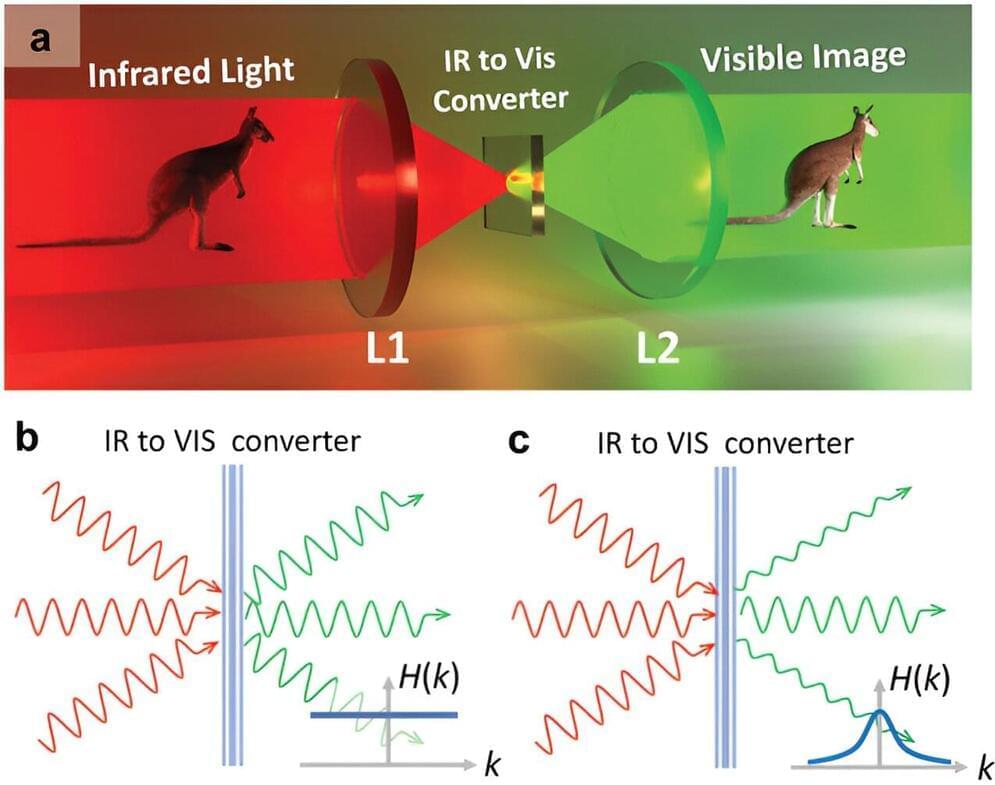Miniaturizing night vision could therefore lead to widespread adoption. Creating night vision filters that weigh less than a gram and can sit as a film across a pair of traditional spectacles opens up new, everyday applications.
Consumer night vision glasses that allow the user to see the visible and infrared spectrum at the same time could result in safer driving in the dark, safer nighttime walks, and less hassle working in low-light conditions that currently require bulky and often uncomfortable headlamps.
In research published in Advanced Materials, TMOS researchers from the Australian National University demonstrate enhanced infrared vision non-linear upconversion technology using a non-local lithium niobate metasurface.









Leave a reply